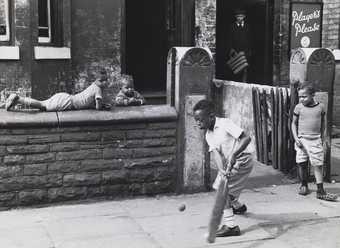By building long-term relationships with local people, these imagemakers sought to represent working-class communities from within
The photographers and filmmakers in this display used social documentary practices to record the lives of communities in northern England during a period of socio-economic upheaval. Acknowledging the traditional imbalance of power between the image-maker and subject, they found new ways to connect with the people they documented. Some were from the areas they photographed and filmed, others relocated to the North, building relationships with local people in order to better represent them. These image-makers attempted to create compassionate records of their subjects lives in a manner only an insider can. Many of them set out to challenge stereotypical narratives and create images that could act as a catalyst for social change.
The photographs in this display were taken during a period of deindustrialisation in the north of England. The decline of heavy industry and manufacturing had profound consequences for people working in coal mines, shipyards, iron and steel works, and factories. Thousands were left unemployed as specialised machines replaced the workforce and manufacturing moved to countries where wages were lower. Britain was also recovering from the destruction of the Second World War. Large-scale post-war rebuilding led to the demolition of housing the government deemed ‘unfit for habitation’. Entire neighbourhoods were demolished, and communities were displaced. These images provide an insight into the lives of people who experienced this upheaval first-hand. They reveal the challenges these communities faced, the resilience they showed and the joy they continued to find in their daily lives.

